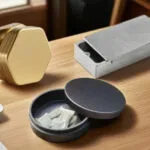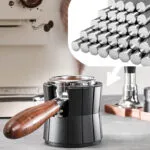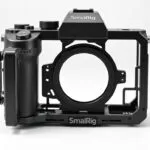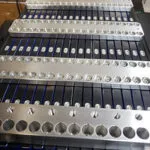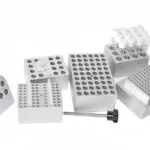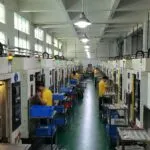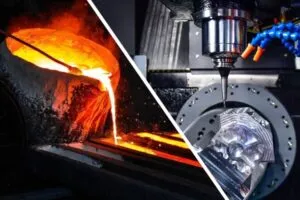304 stainless steel and 316 stainless steel are two common stainless steel materials, which differ in composition, performance and applicable scenarios. In this blog, we will conduct a detailed comparative analysis of these two materials.
1. Differences between the two materials
- Composition
304 stainless steel: mainly contains iron, chromium (18% to 20%), nickel (8% to 11%), and does not contain molybdenum.
316 stainless steel: based on 304, the chromium content is reduced, and the nickel (10% to 14%) and molybdenum (2% to 3%) content are increased. The addition of molybdenum is one of the main differences between 316 stainless steel and 304 stainless steel.
- Corrosion resistance: 316 stainless steel contains molybdenum, which is much stronger than 304 stainless steel in terms of resistance to chloride ion corrosion and pitting corrosion.
- Mechanical properties: The strength and toughness of 316 stainless steel are slightly higher than those of 304 stainless steel, and its performance at high temperatures is also better.
- Magnetism: 304 stainless steel is usually non-magnetic, and may have weak magnetism after cold processing; 316 stainless steel is slightly magnetic.
- Price: Since the alloy composition of 316 stainless steel is more complex and contains precious molybdenum, its cost is usually higher than that of 304 stainless steel.

2. Advantages and disadvantages of the two materials
- 304 stainless steel
Advantages: Good corrosion resistance, heat resistance, low temperature strength and mechanical properties, good processing performance, no heat treatment hardening phenomenon, relatively low price, high cost performance, and beautiful surface.
Disadvantages: In specific strong corrosion environments such as high concentrations of chloride ions, the corrosion resistance is not as good as 316 stainless steel.
- 316 stainless steel
Advantages: Excellent corrosion resistance, especially resistance to chloride ion corrosion and pitting, good strength and toughness, and good high temperature stability.
Disadvantages: High price, greater processing difficulty, and higher requirements for processing equipment and processes.
3. Applicable parts and industries
- 304 stainless steel
Applicable parts: pots, pans, and tableware in kitchen equipment, railings and handrails in architectural decoration, general mechanical parts such as shafts, bolts, and nuts.
Applicable industries: processing equipment and containers in the food and beverage industry, home decoration industry, general machinery manufacturing industry, automotive interior parts, etc.
- 316 stainless steel
Applicable parts: parts of marine ships, key components of seawater desalination equipment, chemical reactors, pipelines, scalpels and implants in medical devices, etc.
Applicable industries: marine engineering, petrochemicals, pharmaceuticals, medical devices, environmental protection and other industries with extremely high requirements for corrosion resistance.
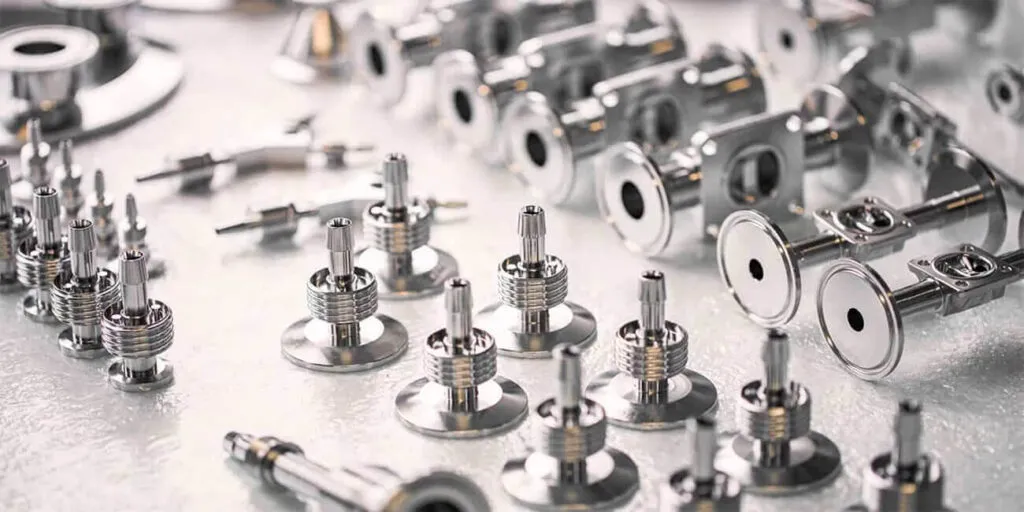
4. Selection method in CNC processing
- Consider the use environment of parts
If the parts are used in general indoor environments or weakly corrosive environments, such as ordinary mechanical structural parts, household items, etc., 304 stainless steel can usually meet the requirements.
If the parts work in strong corrosive environments such as marine environments, chemical environments with high concentrations of chloride ions, and medical environments, 316 stainless steel should be selected.
- Consider the performance requirements of parts
For parts that do not require particularly high strength and toughness, but mainly require certain corrosion resistance and good processing performance, 304 stainless steel can meet the requirements.
When parts need to maintain stable performance at high temperatures, or have high requirements for strength and toughness, and have certain corrosion resistance requirements, 316 stainless steel is more suitable.
- Consider cost factors
On the premise of meeting the use requirements, if cost control is more strict, 304 stainless steel is the preferred choice due to its low price.
If the performance and quality requirements of the parts are extremely high and are not very sensitive to cost, 316 stainless steel is a better choice.
We have a lot of experience in processing CNC stainless steel parts. If you are interested, you can send us an inquiry.

